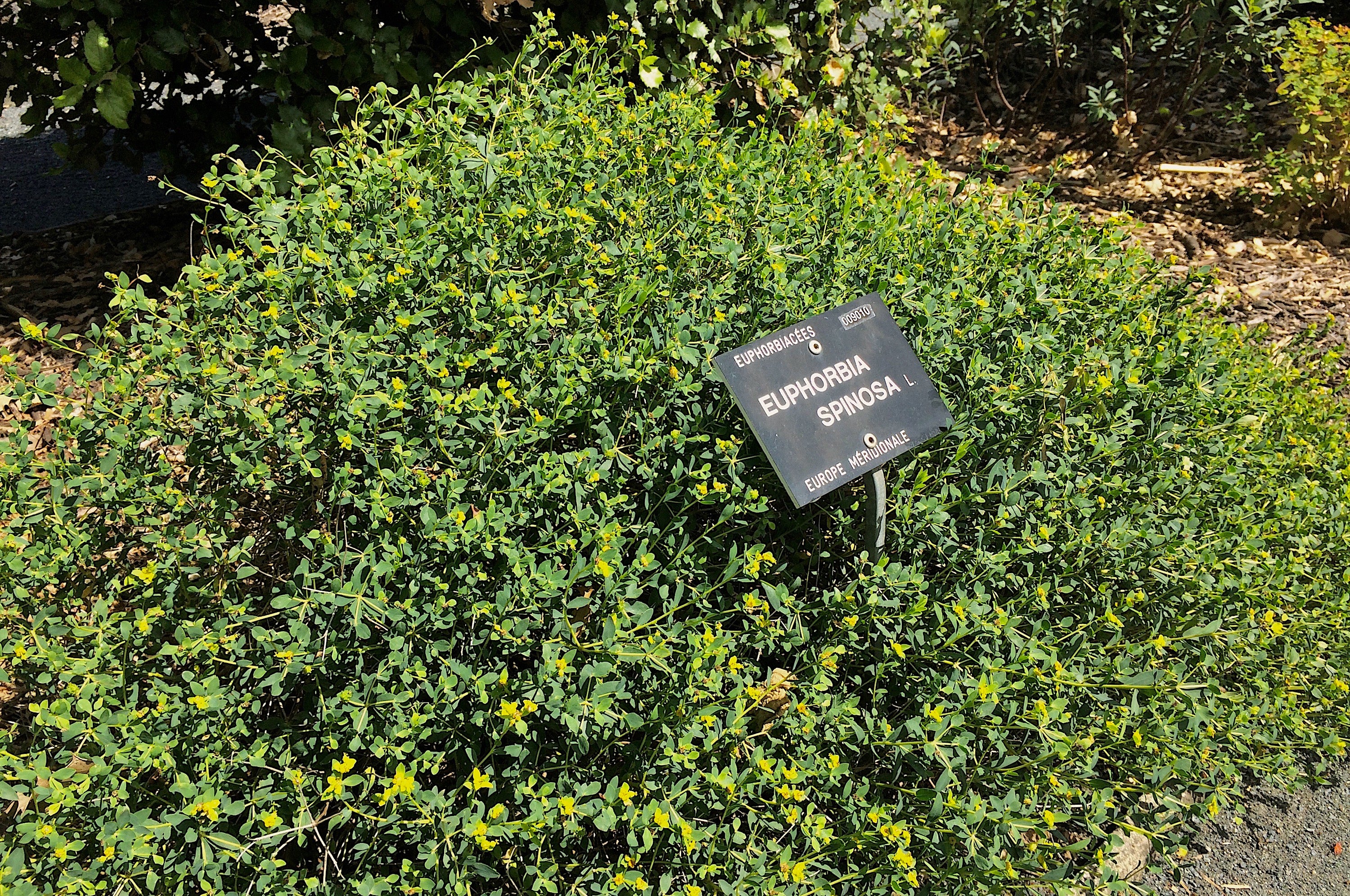Euphorbia spinosa
Approx. 0.5 litre pot
About this cultivar:
Euphorbia spinosa is an alpine/rockery kind of plant. Native to theMediterranean region, France to Albania in dry rocky places. Usually needs a scree or dry wall and must be grown in an alpine house in cold areas. Don't be fooled by the photo where the plant is in a border - I took that in the Lyon Botanic Gardens!
- Position: Full sun, partial shade
- Soil: Almost any soil, dry soil
- Flowers: May, June, July, August
- Other features: Great Ground Cover, Drought Tolerant
- Hardiness: H4 - Hardy through most of the UK (-10 to -5°C)
- Habit: Mat forming
- Foliage: Deciduous
- Height: 15 - 30 cm (0.5 - 1 ft)
- Spread: 15 - 45 cm (0.5 - 1.5 ft)
- Time to full growth: 2 to 5 years
- Plant type: Herbaceous Perennial, shrub, Alpine or Rockery
- Colour: Green, yellow
- Goes well with: Iris, Tulipa, Allium, Lupin and with foliage plants such as Cotinus.
About this genus:
Euphorbia (spurge) is a large and diverse genus of over 2000 (!!) species of flowering plants in the spurge family (Euphorbiaceae). The common name "spurge" derives from the Middle English/Old French espurge ("to purge"), due to the use of the plant's sap as a purgative. The botanical name Euphorbia (pronounced "u-for-be-a") derives from Euphorbos, the Greek physician of king Juba II of Numidia (52–50 BC – 23 AD), who married the daughter of Anthony and Cleopatra (imagine those in-laws!). A philosopher-king, Juba was a prolific writer on various subjects, including natural history. In 12 B.C. Juba named this plant after his doctor Euphorbos. In 1753, Botanist and taxonomist Carl Linnaeus assigned the name Euphorbia to the entire genus in the physician's honor! Phew!
Depending on the cultivar, Euphorbia grow almost anywhere that is not too extreme; we have them everywhere in our garden at Ballyrobert. In the garden Euphorbia is prized for its unique flower heads, textural foliage, and wonderful garden structure. Many new perennial Euphorbia cultivars feature leaves that vary from green to yellow to blue-green to powder blue to purple and some are even variegated or splashed with colour. The flowers attract butterflies and all sorts of creepy crawlies; truely a garden essential!
Try them with Iris, Tulipa, Allium, Lupin and with foliage plants such as Cotinus.


